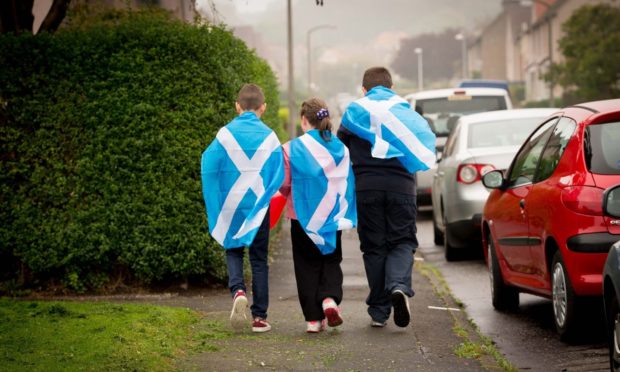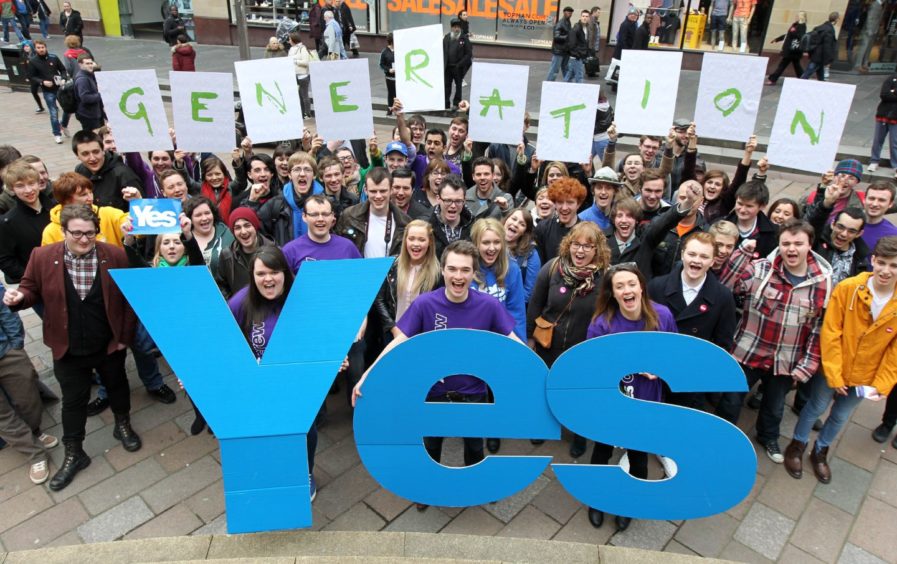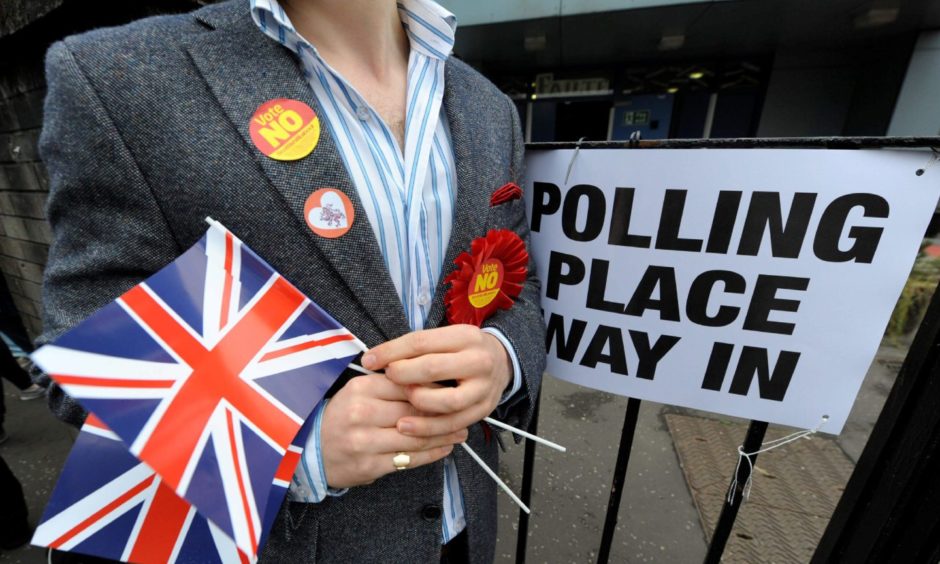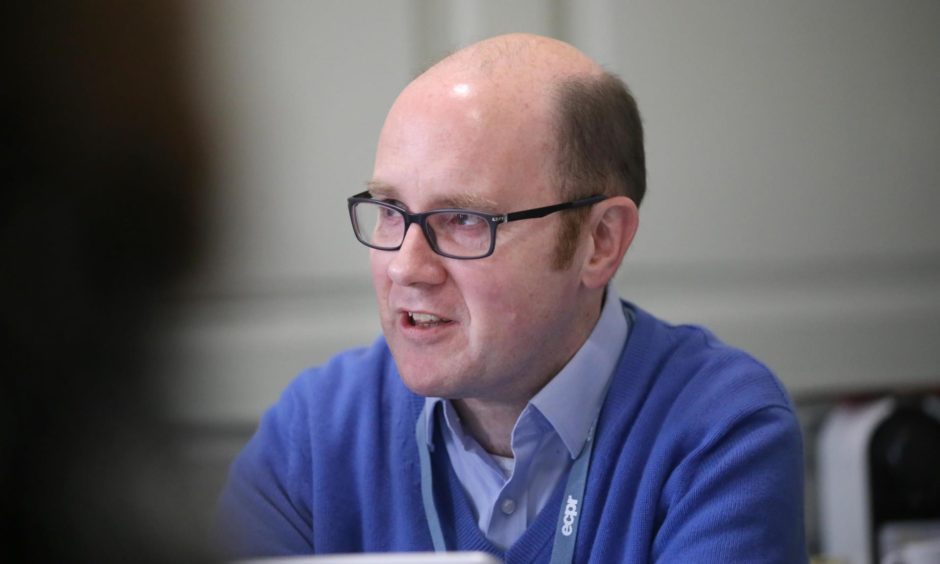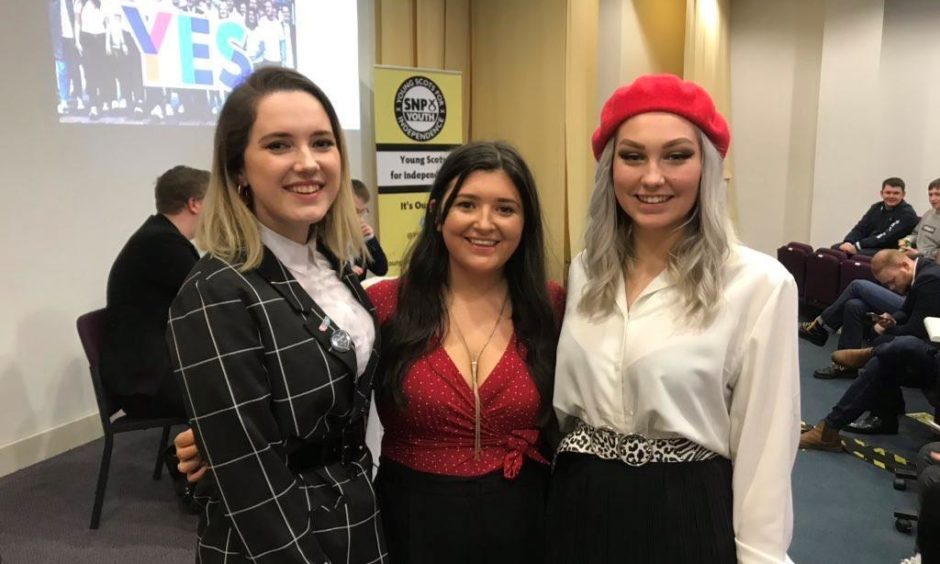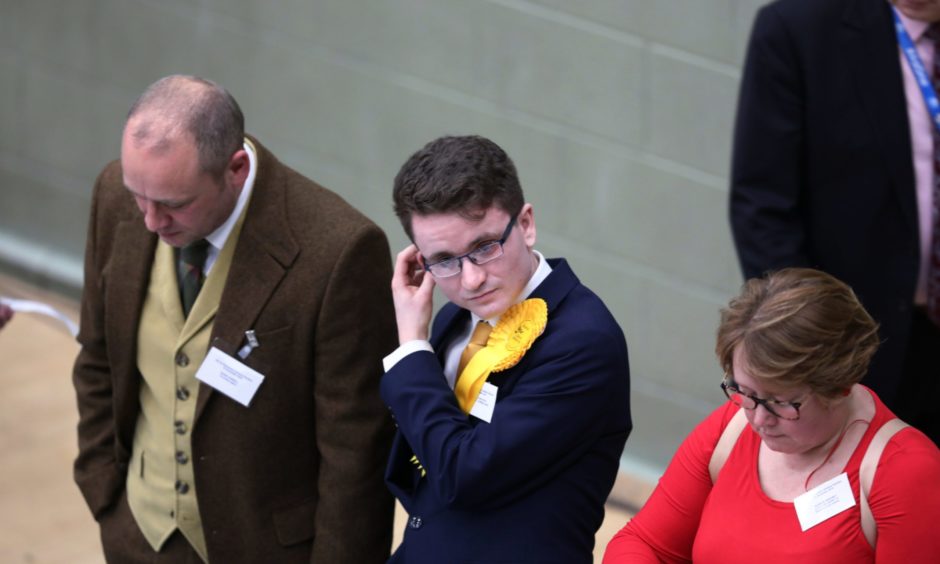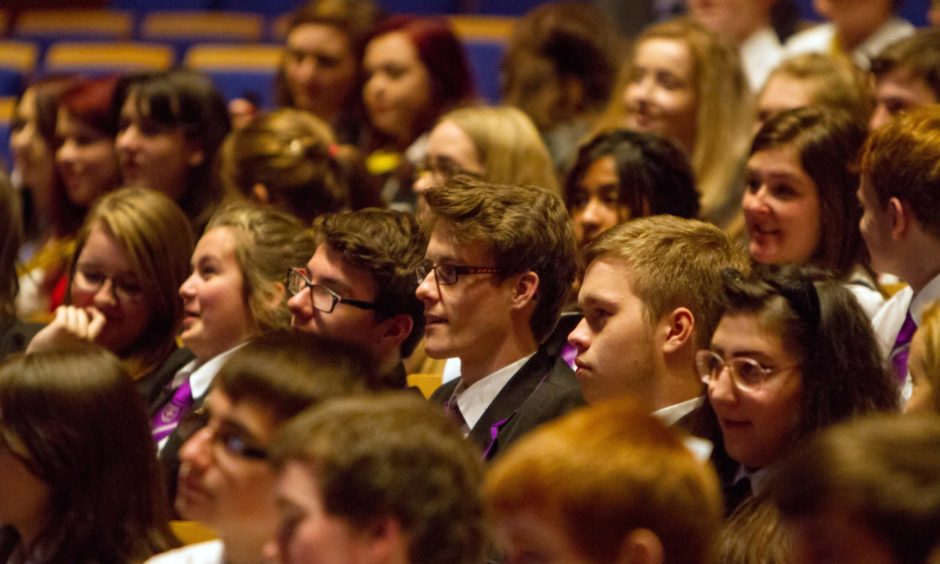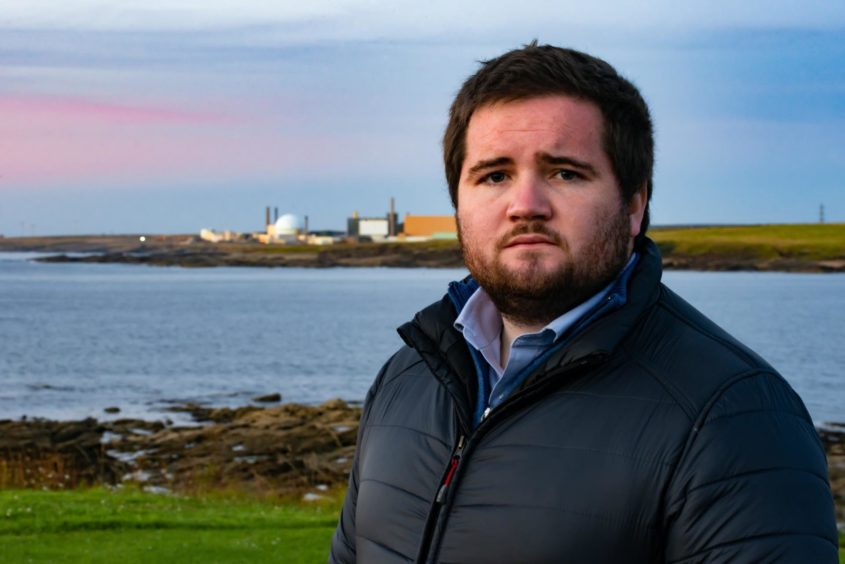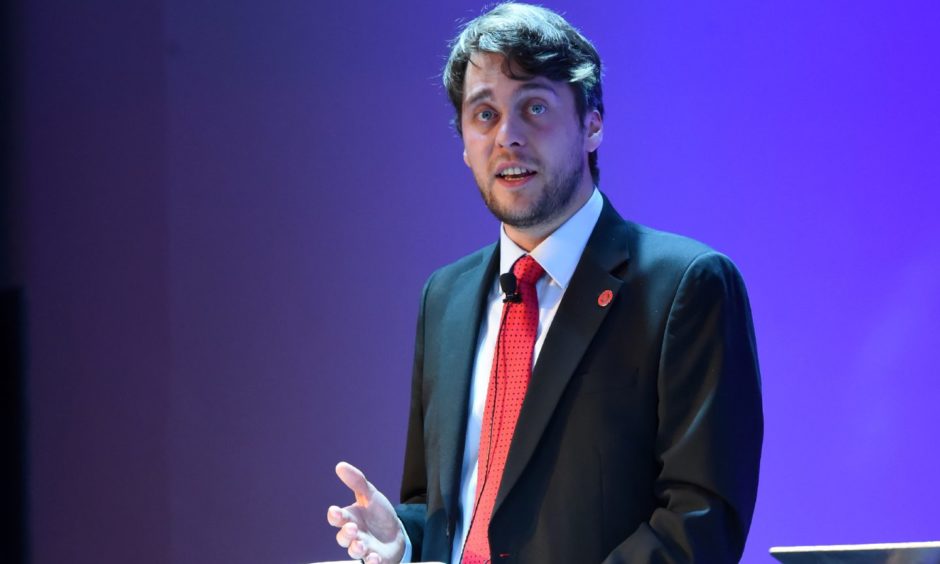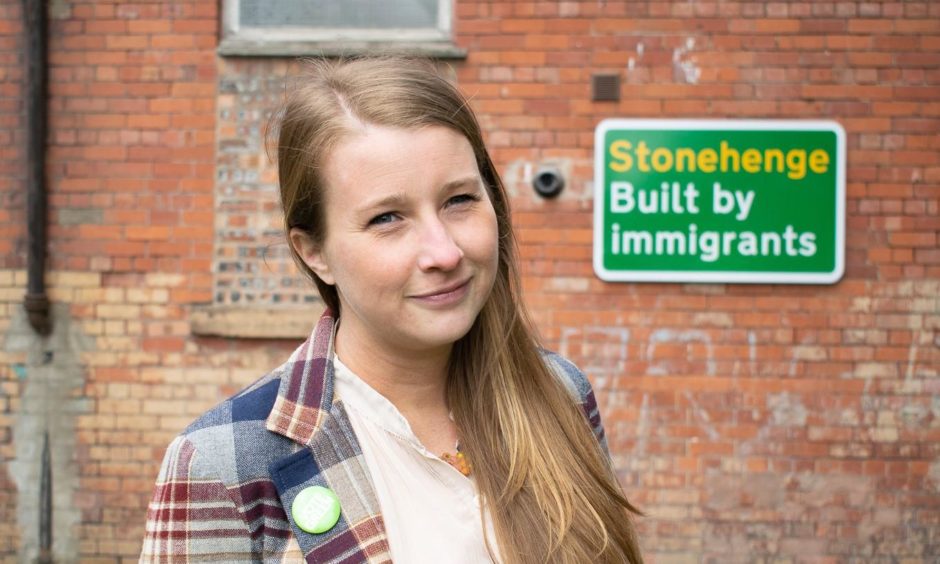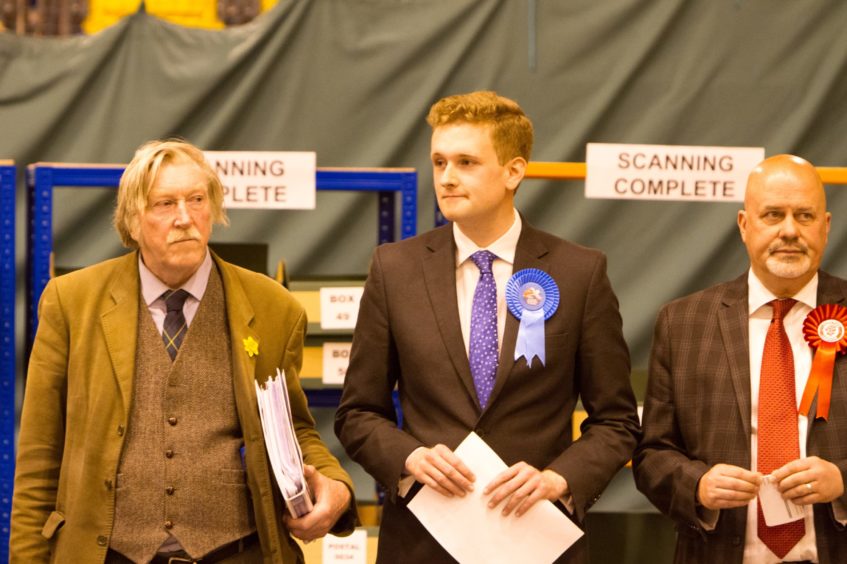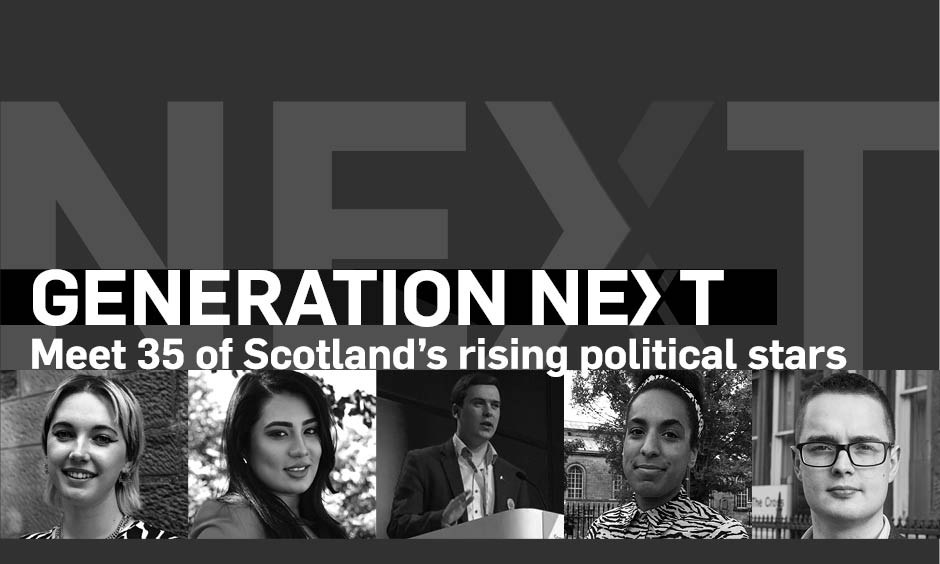Politics in Scotland is destined to be dominated for decades to come by an emerging band of young people whose passion was forged by the 2014 independence vote, a major new series on our regions’ rising stars shows.
That is one of the most striking findings to emerge from our Generation Next hunt for some of the most promising young politicians poised to take centre stage.
We interviewed 35 people aged 35 or under, from north of the central belt, who are all considered “rising stars” within their political parties.
And we found a cadre of young Scots who were politicised in the highly-charged run-up to the 2014 independence battle are now on the brink of making their electoral breakthrough.
Across Scotland, dozens are expected to be standing for election to Holyrood next year, with many more to follow in contests for local councils in 2022 and the next Westminster vote.
Experts believe the impact of the referendum and the lowering of the voting age to include 16 and 17-year-olds have combined to create a special “cohort effect”.
It could ensure that Scotland continues to “buck the trend” in terms of youth participation, but it may also help to cement the constitutional chasm at the heart of the nation’s politics.
The trend had already begun to emerge at elections held in Scotland since 2014, but could now enter a new phase, according to research for our project.
More than half of the people featured are confirmed or prospective election candidates for next year, with the rest singled out by colleagues as “ones to watch” for the future.
In the interviews, a majority pinpointed the 2014 vote as the initial inspiration for their involvement, including almost all of the prospective politicians who were at school or university during the campaign.
Sir John Curtice, professor of politics at Strathclyde University, said the trend reflected the unprecedented engagement with the topic at the time.
“This was an event that mobilized Scotland politically in a way that nothing else since the advent of the mass franchise has done,” he said.
“It’s bound to be the case that, in so far as people were drawn into activism on the two sides of the argument, some of those have carried forward.”
Alistair Clark, author and reader in politics at Newcastle University, highlighted studies which showed that groups of youngsters politicised by particular events continued to be motivated by the same issues, such as the “classic example” of the Vietnam War in the US.
He said he would expect “something very, very similar” in Scotland, particularly because the voting age was lowered for the first time at the referendum.
“I think there is probably a cohort effect going on – that culture of activism that was around during the referendum, the cultural participation that was around during the referendum, coupled with the fact that there has been an enfranchisement of younger voters as well, and that has continued since,” he said.
I think it’s fascinating, because one of the big complaints about youth participating and youth voting and so on is generally the lack of it.”
Alistair Clark
“I think it’s fascinating, because one of the big complaints about youth participating and youth voting and so on is generally the lack of it.
“That is consistently found across different countries, it is not just a British thing, and to some degree Scotland seemed to buck that trend a bit during the referendum.
“If what you are finding continues, I think that is evidence that Scotland has become a bit more different, and is having a slightly different culture of participation, in that regard.”
Several of the future stars we interviewed described how the referendum coincided with significant moments in their personal lives, such as the period between the end of school and beginning of further studies.
Cailyn McMahon moved to Scotland in the summer of 2014, with the South Africa-born teenager swapping Dubai for Dalgety Bay.
Now 20, the Glasgow University student is the national convener of the Young Scots for Independence, previously known as the SNP Youth.
“It was 2014, the year of the referendum. That was 100% what got me involved, especially coming from Dubai, where it is obviously not a democracy – I’d never seen an election,” she said.
I suppose I can pinpoint the kickstart to the 2014 independence referendum…”
Ross Gibb
“I remember actually being 14 and having to Google what a referendum was.
“I didn’t really get involved, but because the voting age was lowered for the first time, and everyone was talking about it at school, I assumed everyone in Scotland was really political and had a really sound knowledge of the political world.
“So, I was like, ‘right, well, I better do my research’. And fast-forward a couple of months and I was determined I was going to join the SNP as soon as I could.”
Banff Academy pupil Ross Gibb was only 11 when the referendum was held, but now views it as a pivotal point.
The Scottish Youth Parliament member said: “I suppose I can pinpoint the kickstart to the 2014 independence referendum, because for the first time politics had made it into my household’s dining table, which is something that had previously never happened before.
“It was once we started discussing these points it started making me question a few things.”
‘I was one of three No voters…’
In Dundee the majority of Graeme McKenzie’s family and classmates at Menzieshill High were voting Yes, but the young Labour activist held a different view.
Mr McKenzie, who is now 22 and hopes to be the Labour candidate in Dundee City East next year, said: “That’s really what spurred it (his interest in politics).
“Because obviously the debate about the independence referendum had come around and I had staunchly said that I was a No voter from when that first came around.
“I think I was one of three No voters who were eligible to vote at school, so I got quite a bit of stick for it, as you can imagine. I was in the minority, at school.”
Mr McKenzie could end up standing in Dundee City East against 21-year-old Liberal Democrat Michael Crichton who was a pupil at Grove Academy in Broughty Ferry during the referendum.
“My first real involvement in any political activity was when I was at school and I saw the way the referendum was going,” he said,
“I wasn’t even old enough to vote, I was turning 16 two months after the vote, but I phoned the Better Together campaign the night before the referendum polls opened and said, ‘I need to help out’.
Because I saw the upward trajectory of the Yes campaign and thought I needed to help out, so I was on the polling station for the Better Together campaign in Barnhill, Dundee.”
“Because I saw the upward trajectory of the Yes campaign and thought I needed to help out, so I was on the polling station for the Better Together campaign in Barnhill, Dundee.”
Mr Crichton added: “I’ve always wanted to become involved in politics. To become the MP or MSP or elected parliamentarian? I suppose that really came to me when I was 15. It was probably the referendum.”
Fellow Lib Dem Jack Norquoy, who has been described as “one of the brightest political talents I have ever come across” by former Scottish Secretary Alistair Carmichael, was a pupil at Stromness Academy on Orkney in 2014.
“I suppose the big thing was the 2014 independence referendum, and I was heavily involved in that, despite being just a couple of months off the voting age of 16,” he said.
“I was the campaign coordinator for Better Together in Orkney, with Orkney going on to have the highest No vote in Scotland, so that was a really good experience.”
‘I became really passionate about getting independence’
Hanna Louise, a Scottish Greens activist in Aberdeen, was just finishing school in Edinburgh as the campaign heated up.
“I went to a couple of protests in my teens for equal marriage, but apart from equal marriage and Pride and things like that, the main thing that really got me into proper politics was the referendum,” she said.
“I was 16 and 17 when the campaign was going on, and as soon as I started to pay attention to it, I became really passionate about getting independence.
“So in the run-up to that I was talking to everybody, and no-one seemed to be talking about anything else.”
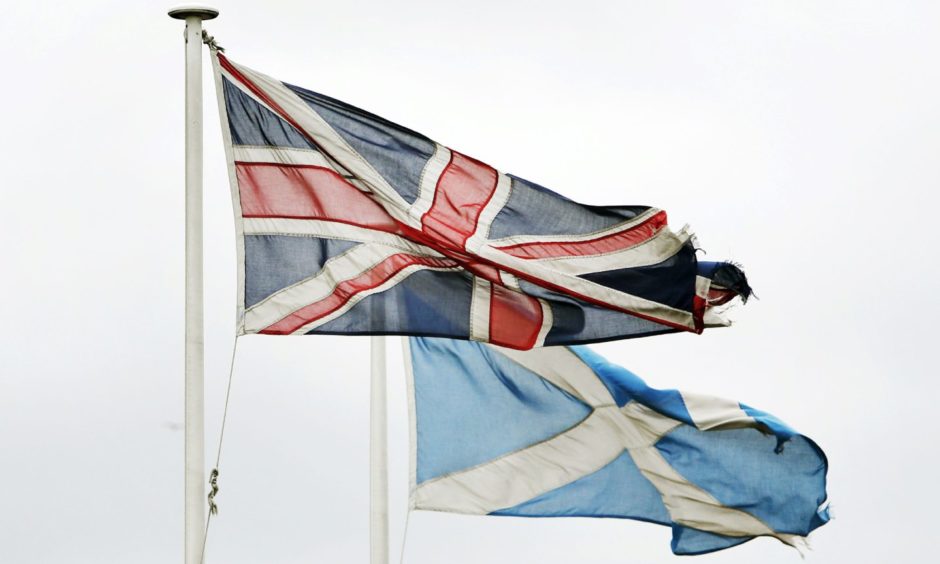
As well as teenagers, the influence of the referendum on many students who were at university or college in 2014 was profound.
Miriam Brett, a think tank research director who has previously stood for the SNP in Orkney and Shetland, was initially sceptical about independence while a second-year student at Stirling University.
“It really took quite a while, I think through conversations with friends, with family members, with various groups at university, with conversations with a few of my lecturers as well, questioning some of the assumptions I had made, and engaging with some of the concerns that I had around the question of independence,” she said.
It was really through that process that I think I got first involved in Scottish politics and, through those conversations and through that dialogue, began to support Scottish independence.”
“It was really through that process that I think I got first involved in Scottish politics and, through those conversations and through that dialogue, began to support Scottish independence.
“It was really there that my involvement with the SNP really began.”
Struan Mackie is a Thurso councillor who will be the Scottish Conservative candidate in Caithness, Sutherland and Ross next year.
His party leader, Douglas Ross, said he anticipated a “bright future” ahead for Mr Mackie in Scottish politics, but he might have taken a different path had it not been for the referendum.
The 27-year-old said: “Like a lot of people my age, it was probably the independence referendum that made me a bit of a political animal.
Like a lot of people my age, it was probably the independence referendum that made me a bit of a political animal.”
“Growing up in the north Highlands, there is always the default Liberal Democrat vote, and I think that was just one of these things I’d always assumed, but it was the independence referendum, and being in Glasgow at that time, which I have to be honest wasn’t a particularly pleasant experience.
“It’s got nothing to do with the football team I support, or anything that’s deep down, it’s just that I’ve always thought of myself as British and actually engaging with some folk who didn’t have the same ideology as myself on the constitution, that made me think, ‘oh, there’s something I’m going to have to fight for here’.”
Callum O’Dwyer, a former Labour candidate in Aberdeen South, had not been particularly politically active while a student at Edinburgh University, until everything changed one night in 2012.
“I remember one evening, one of my best friends from school, we had known each other since we were five, he was involved very heavily with the independence campaign,” he said.
“I remember having a bottle-of-wine-each kind of screaming match over it, and then immediately after, the next day, I was like, ‘no, I’ve got to be on the side I believe in, which is Scotland in the UK and it’s got to be about fairness, and it’s got to be about fair distribution and people having a say in things.
“I joined the Labour Party after that.”
The 28-year-old added: “I think it was just the moment that politics became real for everyone.
“The thing about the referendum is that it genuinely felt like Scotland’s future was in people’s hands. It was just such an engaging moment and it felt like so much was at stake.”
‘That sort of buzz’
The campaign had a similar influence on the SNP’s Julie Ford, who is now 28 and the depute provost of Fife.
“It was the referendum that really engaged me, I think along with a lot of other people,” she said.
“It gave people, either side you were on, that sort of buzz. So I got involved in Yes Scotland and I got involved in the SNP.”
Dunfermline-based Mags Hall will be second on the regional list in Mid Scotland and Fife for the Scottish Greens next year.
She said: “Like a lot of people my generation, it was 2014 and the independence referendum that really brought me into mainstream politics, and party politics in particular.
“I joined the Greens the day after the independence referendum, like a lot of people, trying to turn the disappointment of the indyref into a positive action.”
‘I was crushed after that referendum result’
Scott Rutherford, a fellow Green who is also a former and future candidate in Fife, said: “I was crushed after that referendum result.
“I was thinking, ‘I sort of feel like my future has been kicked in the teeth a bit’, so I’m going to get involved in politics, I’m not going to accept austerity, I’m not going to accept a minimum wage that isn’t enough to scratch a living.”
Paul Robertson, a former SNP candidate in Banff and Buchan and party policy chief, was living in Berlin in 2014 but returned to help lead the local Yes campaign.
“I was enjoying spreading my horizons, as many young Scots do, go abroad and experience different cultures, but I felt if I didn’t come back and work in the referendum then I would have regretted it,” he said.
“So I ended up packing up my life in Berlin and coming back to Banff and Buchan.”
Callum Purves, who is a councillor in Perth and Kinross and works as a campaign manager for the Conservative Party, is another who was motivated by the referendum.
“The first proper political campaigning that I did, and I think it would be similar with a lot of people my age, and even in older people now who have just come into politics, was during the Scottish independence referendum,” he said.
“Because that was something that I cared very much about and was very passionate about, making sure Scotland remained in the United Kingdom.
“That was where I started doing work on street stalls and delivering leaflets and things like that.”
Mr Purves was at St Andrews University at the same time as Dominic Nolan, who now serves as a Conservative councillor in Fife.
“When I arrived at university, my first year, that was 2014, and the referendum was taking place at that time and I got involved over that summer and campaigned with Better Together,” he said.
“Shortly after the referendum I joined the Conservatives, because they seemed to be the party that most strongly championed the union.
Like a lot of folk my age, and younger as well, the 2014 referendum was a big moment for getting involved in politics because it was all around you.”
“They always seemed to be the natural choice for me but it was only after the referendum that I finally got the push to join the party and became very interested in politics.”
Dundee-based Leodhas Massie, who grew up in Skye and Lochalsh, and Moray, will be a Scottish Green candidate on the north-east regional list next year.
“Like a lot of folk my age, and younger as well, the 2014 referendum was a big moment for getting involved in politics because it was all around you. You couldn’t avoid it.”
